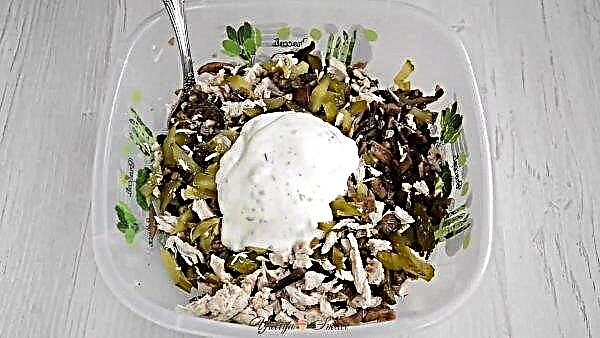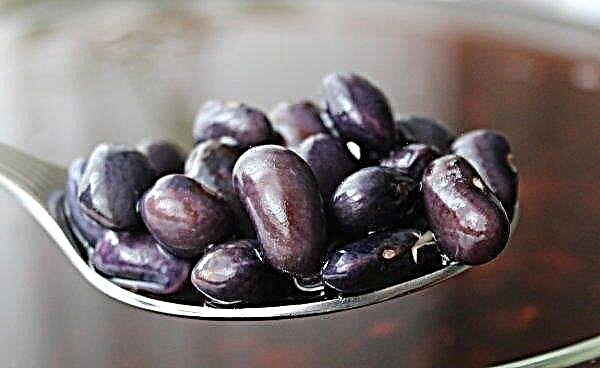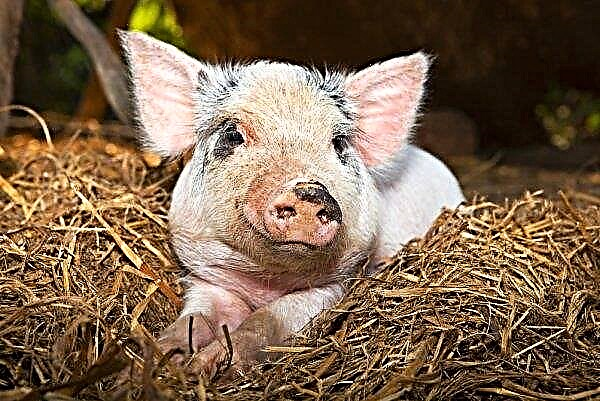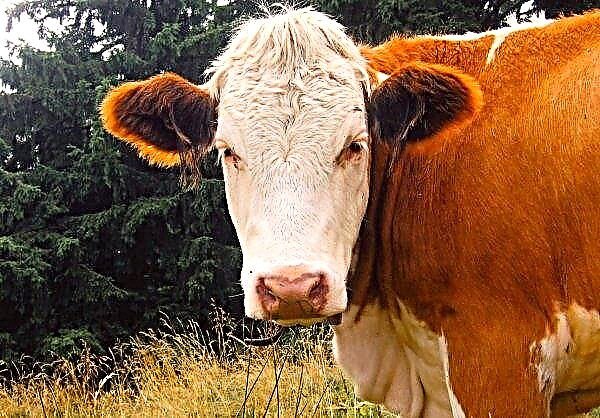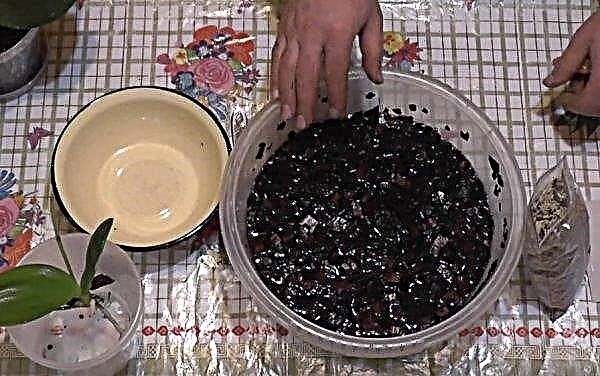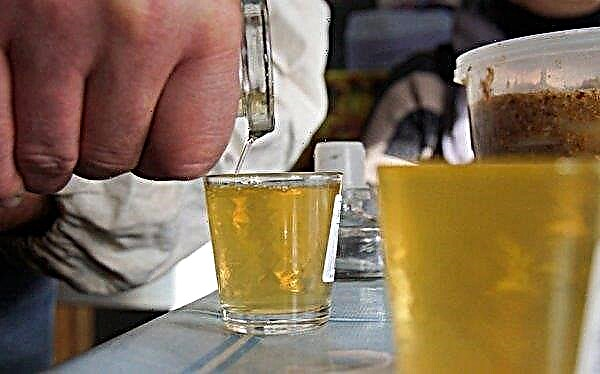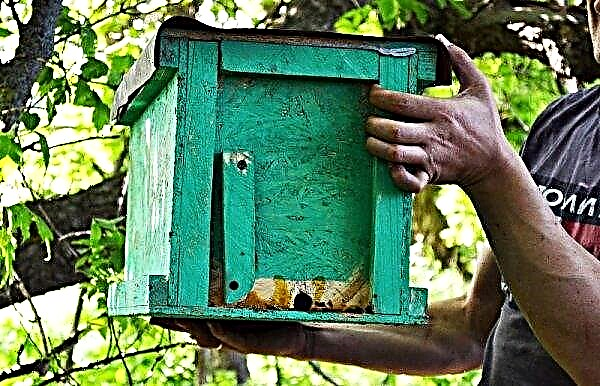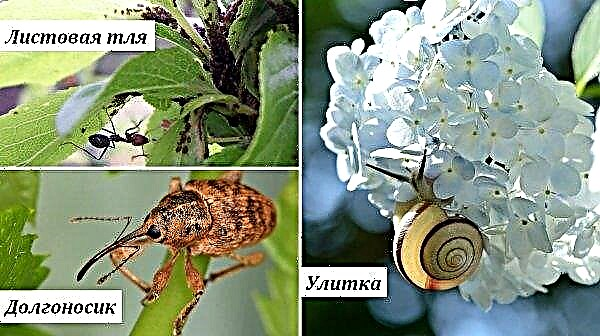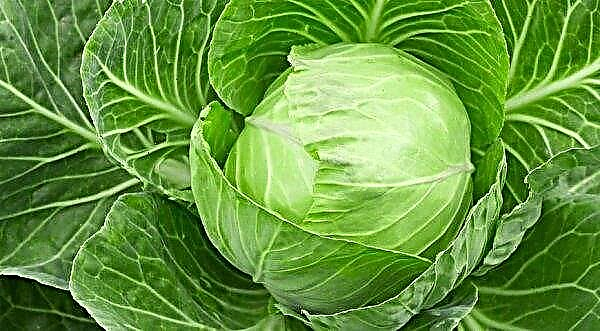To decorate the garden, many use various bright flowers. To give the flowerbed unusual shades and some exotic, coniferous plants can be used. They are able to make notes of the highlands. This article will discuss the basic rules for growing pine cedar varieties Glauka.
Botanical tree description
The variety was bred in 1949 in the Netherlands, namely in the city of Boscop. Outwardly, European culture is similar to Korean, so some gardeners confuse these species. Glauka tree is a dwarf tree. The maximum height is 4 m. The diameter of the crown, the shape of which is columnar, reaches 2 m. The culture is slowly growing. During the year, the maximum increase is 10-15 cm.
Description of Glauka pine:
- the needles have a double color (the outer part is bluish-green, and the inside is white-blue);
- cones are oval, light brown in color. Their length reaches 8 cm and a diameter of 5 cm;
- needles length - 6 cm;
- life expectancy is 700-1000 years.
Important! The frost resistance of the variety is high. The tree undergoes freezing up to -45 ° С.
Landing
It is necessary to plant a variety of cedar pine in the spring, when the soil temperature reaches + 10 ° C. If you do this earlier, then the planting material will not take root. Inspect the seedlings carefully during the purchase. On their surface there should be no cracks, spots and plaque. All these characteristics indicate spoiled planting material. If you use it for planting, then the tree will die in 1-2 years. The optimal height of a plant suitable for planting is about 90 cm. A root system must be developed for it (at least 30 cm long).

It is better to plant plants in sunny areas. Also, the tree can develop in partial shade. The only caveat - in this case, the pine will be 1–2 m lower. A variety of Pinus cembra Glauca is not demanding on the soil, so planting material can be planted in clay, sand, super-sandy lands or chernozem. The soil should be moderately moist and drained. The optimum pH balance of the soil is 5–7.
Step-by-step landing procedure:
- Dig a hole 50 cm deep and 70 cm wide.
- At the bottom, lay out a drainage layer (at least 10 cm). For this, it is recommended to use expanded clay or broken brick.
- Lay a layer of nutrient soil on top of the drainage (mix peat and turf soil in a 1: 1 ratio).
- Pour 10 liters of water.
- Place the seedling inside and sprinkle with soil.
- Leave the root neck on the surface so that it provides an influx of nutrients and air to the roots.
- Pour each seedling with 10 liters of water.

Pine care
To grow a healthy compact tree, it is not enough to plant it correctly. Care must be taken to care for it throughout the season. The culture is drought tolerant. It needs watering only in the spring, at the stage of kidney formation. Top dressing should be moderate. Do not forget to loosen the topsoil and remove weeds. It will also require annual pruning.
Did you know? The tallest pine, also called the "Lambert plant," grows in America. Its height is about 70 m.
Watering and feeding
Watering should not be frequent, but plentiful. In the spring, when the tree needs water most, you need to pour 30 liters under each plant. Irrigate the soil every 2 weeks. Further watering is carried out with an interval of 1 month. Pour at least 20 liters of water under each bush. You also need to water the tree crown from a hose once a month. This will remove dust and pests. Top dressing is applied 2 times per season. In spring, nitroammophoska (40 g per 10 l of water) is used, and in the fall, superphosphate (100 g per 10 l of water) is used. The entire amount of fertilizer is poured under one tree.

Loosening and mulching
Loosen the topsoil every week. To do this, use high-quality garden tools, which are pre-disinfected with a solution of potassium permanganate (1 tsp. Per 10 l of water). The depth of cultivation should be 10 cm. This condition allows you to get rid of the upper crust, which prevents the penetration of nutrients to the roots, but will not damage the roots of the plant.
Mulching the soil is recommended in October, before the onset of frost. Mix the straw and humus in a 1: 1 ratio and lay out the mulch with a 20-centimeter layer. Thanks to this procedure, you will protect trees from frost and moisture evaporation.

Pruning
In the autumn-winter period, the side buds are broken out with the aim of forming a crown. You can also trim the shoots that are knocked out of the general shape of the plant.
Important! The procedure of crown formation is carried out before the start of the growing season, so as not to weaken the plant.
Sanitary pruning is carried out in the spring, before the start of sap flow. Remove damaged, dry and diseased branches. If this is not done, then the shoots will take a lot of nutrients from the trunk of the tree, thereby provoking the dryness of the crown and needles.
Possible diseases and pests
A variety of cedar pine Glauka is very often affected by such fungal infections:
The main pests of this culture include pine aphids, scabies, scoops, hermes and bark beetles. You need to deal with pests with powerful insecticides. “Aktara” (40 g per 5 l of water) is used against pine aphids. In the fight against scale insects use "Actellik" (70 g per 10 liters of water). An effective remedy against scoops is Vermetik (100 g per 6 liters of water). In the fight against hermes, “Actofit” is used (40 ml per 10 l of water). To destroy the bark beetle, use Calypso (10 ml per 10 l of water). All sprayings are carried out with an interval of 1 month.
The use of wood in landscape design
Very often, the cedar pine variety Glauka is used in landscaping. This type of coniferous crop goes well with vibrant flowers or shrubs. This type of plant is often planted as a hedge or to create shade in the garden. Due to the compactness of the tree, it is planted along the curbs.

So, now you know how exactly you can grow beautiful and lush pine trees at home. If you follow all the instructions for planting and care, then your garden will attract attention and envy others.

